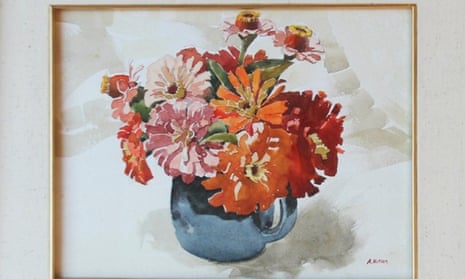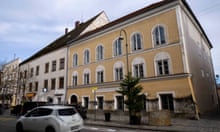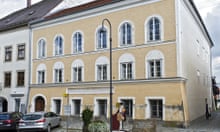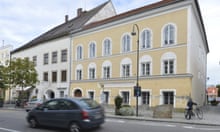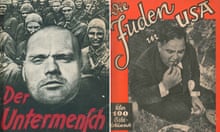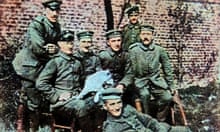A Los Angeles auction house has withdrawn a still-life watercolor painted by a young Adolf Hitler, which was due to be auctioned on Thursday.
Nate D Sanders, a Los Angeles-based memorabilia collector, confirmed it withdrew the painting but refused to comment on the decision. The auction was to be held online, and bidding for the canvas was set to start at $30,000 (£27,000).
The canvas is believed to have been painted in 1912 by the man who would become the future leader of the Nazi party, when he was still a struggling artist in Vienna.
The painting depicts a bright floral arrangement in a blue pitcher. In the corner of the canvas, “A Hitler” is signed in red ink. The auction house described the work as in “near fine condition”.
The piece is said to be one of the estimated 2,000 paintings Hitler created during the years he worked as an artist in Vienna, the majority of which did not survive the second world war.
Sanders is still selling two Hitler-related items, including a signed, two-volume set of Mein Kampf and a signed change-of-address document from August 1909, the troubled young man’s last known address before he registered as homeless just four months later. On the document, Hitler lists writer as his occupation.
Bidding for the two-volume copy of Hitler’s seminal book starts at $35,000 (£32,000), and at $20,000 (£18,000) for the document.
In 1908, at 18 years old, Hitler moved to Vienna to pursue a career as an artist. But the Nazi leader was twice rejected from the Vienna Academy of Art, which depressed his ambitions of becoming a professional painter. Struggling and poor, Hitler made a small living selling his drawings to tourists.
It was then that he met Samuel Morgenstern, a Jewish art dealer in Vienna. Morgenstern took an interest in Hitler and, believing in his artistic talents, sold the young man’s paintings to wealthy Viennese Jewish clients.
But when Hitler swept to power two decades later as Germany’s antisemitic leader, he did not spare his early benefactor. Morgenstern’s gallery was confiscated by the Nazis, and in 1941 the art dealer and his wife were deported to Łódź ghetto in Poland, according to the auction house. Morgenstern died there in 1943. The painting has Morgenstern’s stamp on the back, the auction house said.
Sanders refused to divulge the seller’s identity, except that the person is a private collector. The auction house would not say how the seller came to possess the canvas.
In November, a watercolor believed to have been painted by Hitler sold for about about $161,000 (£147,000) at a German auction house. The painting was purchased by a private buyer from the Middle East.
